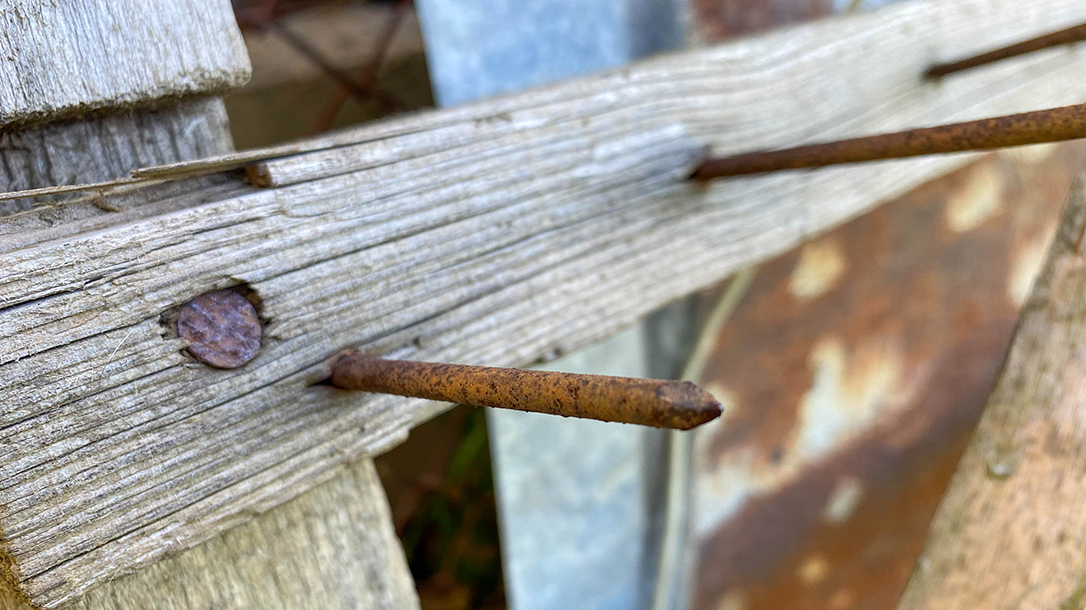Warning: Booby traps are illegal in some states and jurisdictions and can result in real legal ramifications. This article is just a guide on some possibilities, and it is best to determine the legality of these types of traps before considering making or using any yourself.
What do John Rambo, Kevin McCallister from Home Alone and the bare-butt survivalists from Naked and Afraid all have in common? They have all used some form of booby trap for defense and survival. Whether you’re trying to harness that inner Rambo or you are a bit more Wile E. Coyote, building a nonlethal booby trap can provide some real-life additional security for your property or just make for a fun afternoon of constructing something unusual.
In an age of social media and insta-info searches, many Americans leave themselves exposed to criminal elements. It is no secret that crooks now use social media to find potential victims. In 2019, a group of burglars used social media to target upscale Houston-area homes. They stole hundreds of thousands of dollars in property, including a painting by Monet. (Side note: Don’t post on Facebook or Twitter that you are going on vacation.) Stalkers and violent ex-spouses are also a concern in the modern world of information technology, and innocently and casually posting about your life and whereabouts can be used by those who want to do you harm.
Advertisement — Continue Reading Below
That said, no one needs self-defense until they actually do need it. Therefore, nonlethal booby traps may offer a way to deter crime and to avoid a possible confrontation. Here is a look at a few to consider.

1. Tripping Them Up
What happens when that expensive alarm system craps out? Skynet hasn’t taken over as foreseen in The Terminator franchise, and technology isn’t foolproof. A simple wire with some kind of alarm or signal (either electronic or a physical noise-making device) can offer homeowners some extra time and awareness when someone unwelcome trespasses on their property.
Advertisement — Continue Reading Below
The signal from a tripped wire allows time for further investigation, the opportunity to head to a safe space or to call the police, or you may be able to take other legitimate defensive measures, if needed. A quick YouTube or Amazon search offers numerous sources for information on making your own tripwire warning mechanism, which can range from high-tech sensors to confetti blasts. It may not be a First Blood-caliber attack, but this simple booby trap certainly works well if effectively implemented.
“Setting up a tripwire requires only simple common sense and safety procedures,” author Rick Canton writes in his book Prepping: Booby Traps Prepping and Fortifying Your Home With Booby Traps. “Take care to set the trap along a route that an intruder is likely to take if attempting to enter your property.”
2. Play Some Pitfall
This is a nonlethal way to really send an intruder six feet under—as in down an actual hole. The setup is simple; dig a deep pit in a location camouflaged to conceal the cavity. A bad guy creeps along, takes a wrong step and boom! The potential criminal now remains stuck in a deep pit.
Advertisement — Continue Reading Below
These types of booby traps are ideal for property with land and foliage, especially where intruders may enter through a certain direction or path. Pit traps date back to the Stone Age and invented for catching deer and other large prey. In this case, the goal is to catch an invading human. Unlike building a tripwire deterrent, constructing a pit trap may not be so easy. Get ready to dig and dig and dig some more.
3. Preventative Plants
Put that green thumb to good use. Perfectly placed plants can make breaking into a home a more difficult proposition. Areas that may not get as much light at night might be a nice place for thorny bushes or trees. A potential break-in might just be too much of a pain in the ass for a crook looking for an easily accessible window to climb into.
Some conveniently placed and potentially painful plants—like cactuses, rosebushes or blackberry hedges—can be successful, low-tech deterrence measures. These types of plants can also be strategically placed inside the home on window sills or ledges to act as internal deterrents as well, making an intruder think twice about breaking in. And that is the goal; you do not necessarily want to hurt or capture an intruder, but instead, you want to send him on his way to somewhere else. (Important note: Venus flytraps won’t do the trick here.)
Advertisement — Continue Reading Below
4. Nailed It
Simple, visible nails and spikes can also serve as an excellent means of protection. Drive nails into boards and place around possible entrances to your home, including all windows and doors. A would-be intruder might get an unwelcome surprise by stepping onto one of these and may instead decide to flee to tend to an injury rather than risk more injury by sticking around to take some of your stuff.
While this booby trap can certainly be a painful surprise, the mere presence of a spike strip may have a burglar thinking twice about making an entry at all. Seeing such a painful-looking barrier shows that this homeowner is serious about self-defense. It will not be lost on the criminal that something even worse can be waiting inside. However, as with most booby traps listed here, be sure to communicate with friends and family about their existence and location to avoid unintentional injuries.
5. No Jumping The Fence
It’s important to remember that most burglars are looking for something easy, such as a window left open or an unlocked door. Anything that makes their “job” more difficult usually means seeking another place to hit. A few barriers may just be too much of an annoyance to deal with.
Advertisement — Continue Reading Below
Something as simple as fencing can act as an effective deterrent. Any kind of fence can make an intruder’s entrance and exit from a property more time consuming and difficult. A high wooden fence works, provided the gate stays locked, but even just its existence as a barrier adds a level of protection. Other options include chain-link fence, barbed wire, and even an electrical fence is a possibility. Just adding a visual deterrent sends a message to criminals that your house isn’t easy pickings.
6. Sharp Surprise
Like spike strips and nail boards, caltrops can cause some damage but should otherwise leave an intruder in at least one piece. These metal devices make use of four sharp prongs to keep unwanted guests out. No matter which direction a caltrop lands on the ground, one sharp prong always projects upward.
Among other uses, caltrops have been used for centuries to stop advancing armies and chariots and to puncture auto and airplane tires. These gadgets were used extensively in World War I and World War II. One advantage of using caltrops is that they can be spread easily over a wider area, offering better odds of ensnaring an intruder. They are also difficult to see, which is another advantage, but be careful that you don’t caltrop yourself. No one wants to be the boob caught in their own booby trap!
Advertisement — Continue Reading Below
7. Blank Blast
A quick online search for a shotgun blank trap will yield numerous results. These devices use a tripwire to trigger a shotgun shell blank, which results in an extremely loud blast. This can certainly serve as both a warning and a deterrent, and prowlers will most likely think the homeowner has already broken out their handy 12-gauge shotgun.
This device can be screwed into place or attached with a wire tie in case you want to relocate it later easily. These are nonlethal, and some survivalists have even mixed in chili powder, glitter, paintballs and other interesting combinations for even greater effect. One YouTube reviewer even noted, “They’re nonlethal and even legal in California, believe it or not.” These can also be used around a campsite to scare off bears and other predators. No word, however, on if they work on sasquatches or zombies.
























